This post may contain affiliate links. Please read our disclosure policy.
This Lebanese garlic sauce (Toum) is a popular condiment in Lebanese cuisine, made from garlic, oil, and lemon. It’s super versatile and pairs perfectly with chicken dishes, and more!
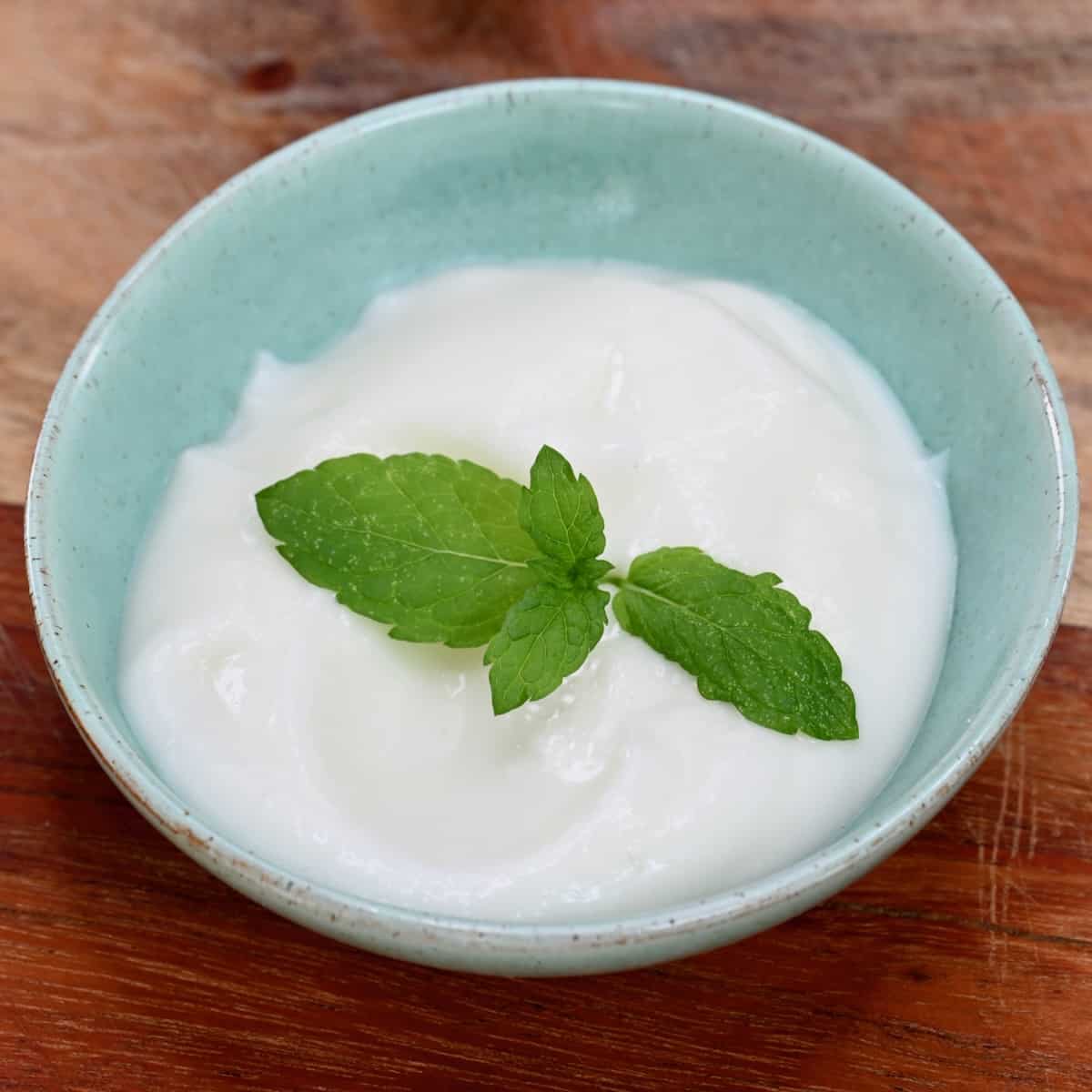
Garlic sauce has been one of my favorite sauces since I was a kid. It’s rich, creamy, and full of garlic — perfect with chicken, whether it’s grilled, baked, or in a sandwich. What’s more, it’s super easy to make with just four ingredients, a food processor, and a little patience. If you’re into garlic and creamy sauces, toum is the ultimate condiment for you.
Table of contents
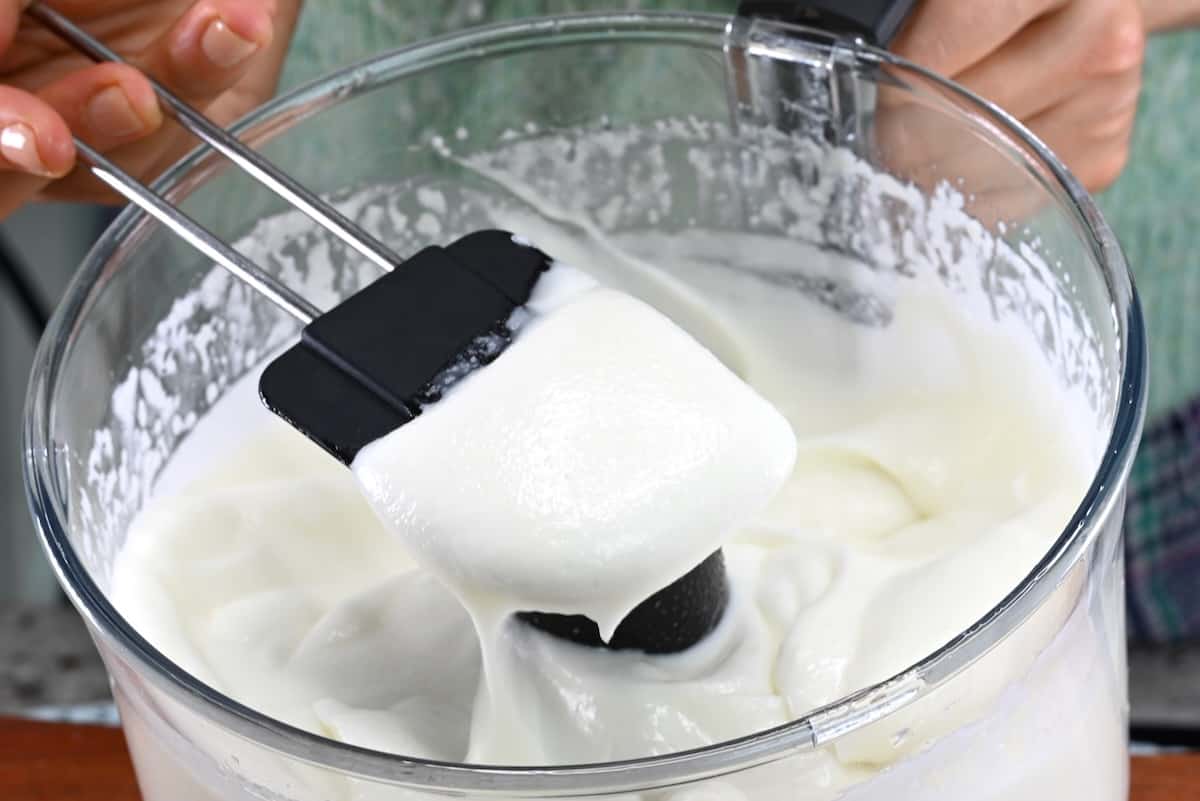
Watch how to make it!
Ingredients
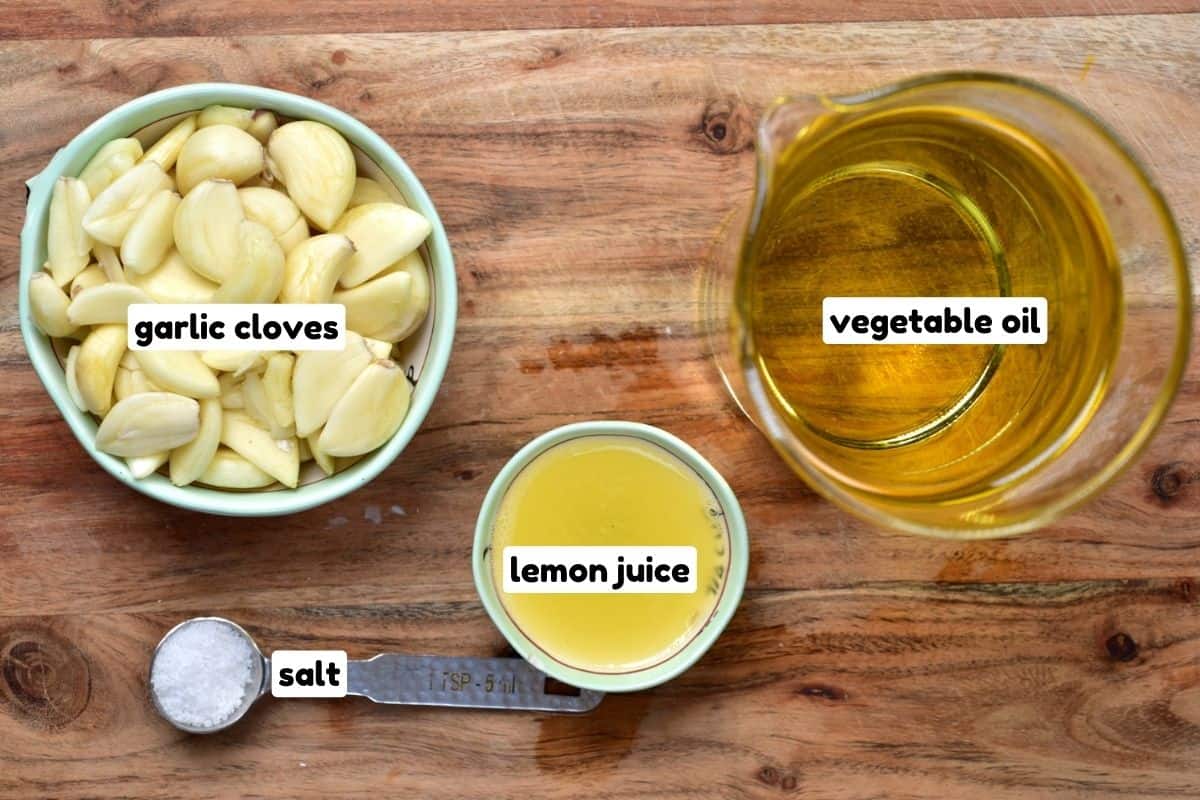
- Garlic: Choose firm, fresh bulbs without green sprouts for the best flavor. Avoid old, sprouting garlic as it tends to be bitter.
- Oil: I prefer to use a neutral-tasting vegetable oil like canola, grapeseed, or sunflower oil. Olive oil can be used but it can be a bit too strong in flavor and create a denser dip.
- Lemon: Use fresh lemons because they help blend and thicken the sauce, making sure the garlic sauce isn’t overpowered by the garlic and oil.
- Salt: Adds taste, helps grind the garlic.
Before we jump right into it, let’s get one thing sorted: this isn’t a recipe I’d describe as “easy.'” The truth is, any time there is emulsification involved, there is a chance of something going wrong, and this garlic sauce is trickier than mayonnaise to emulsify. However, following my instructions, you’ll be whipping up perfect Toum like a pro right the first time! Trust me, it’s worth the effort!
How to make garlic sauce
Make garlic paste: Start by peeling the garlic. Press a wide knife gently over a garlic clove on a cutting board to loosen the skin. Lift the knife, and the skin should come off easily. If you’re dealing with a large quantity, check out my top tips on how to peel a lot of garlic. check out my top tips on how to peel a lot of garlic.
Then, add the peeled garlic and salt to the food processor (or a bowl if you’re using an immersion blender). Blend well until it’s well minced, stopping to scrape down the sides of the jug if necessary.
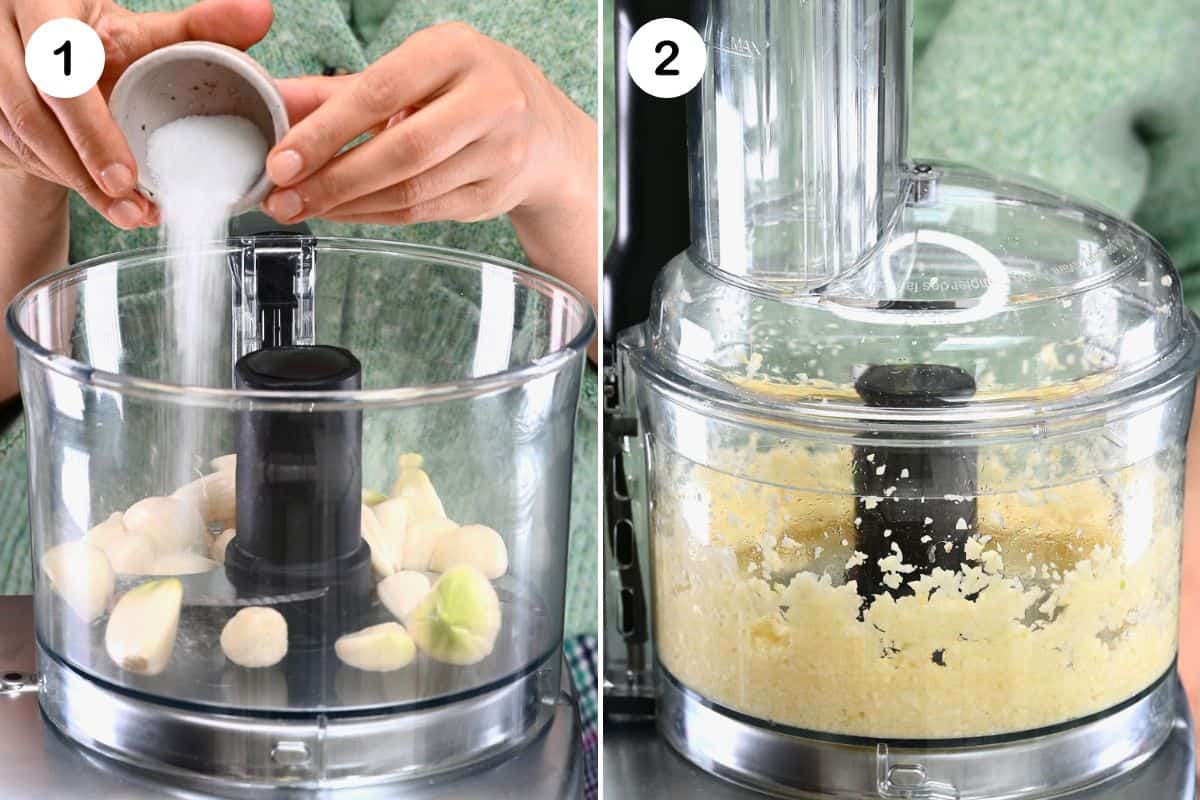
Adding salt when grating garlic makes it easier to break down the garlic into finer pieces and enhances its flavor by bringing out its natural juices.
Add oil and lemon juice: After mincing the garlic, begin to incorporate the oil gradually. Properly mixing the oil with the garlic from the beginning is essential for achieving the right emulsion for the garlic sauce. If you can control the pour, drizzle the oil directly from the bottle; if not, opt for a measuring spoon. Add the oil incrementally – slowly pour one spoonful at a time while the machine is still running. Leave plenty of time between each spoonful so the oil is fully incorporated.
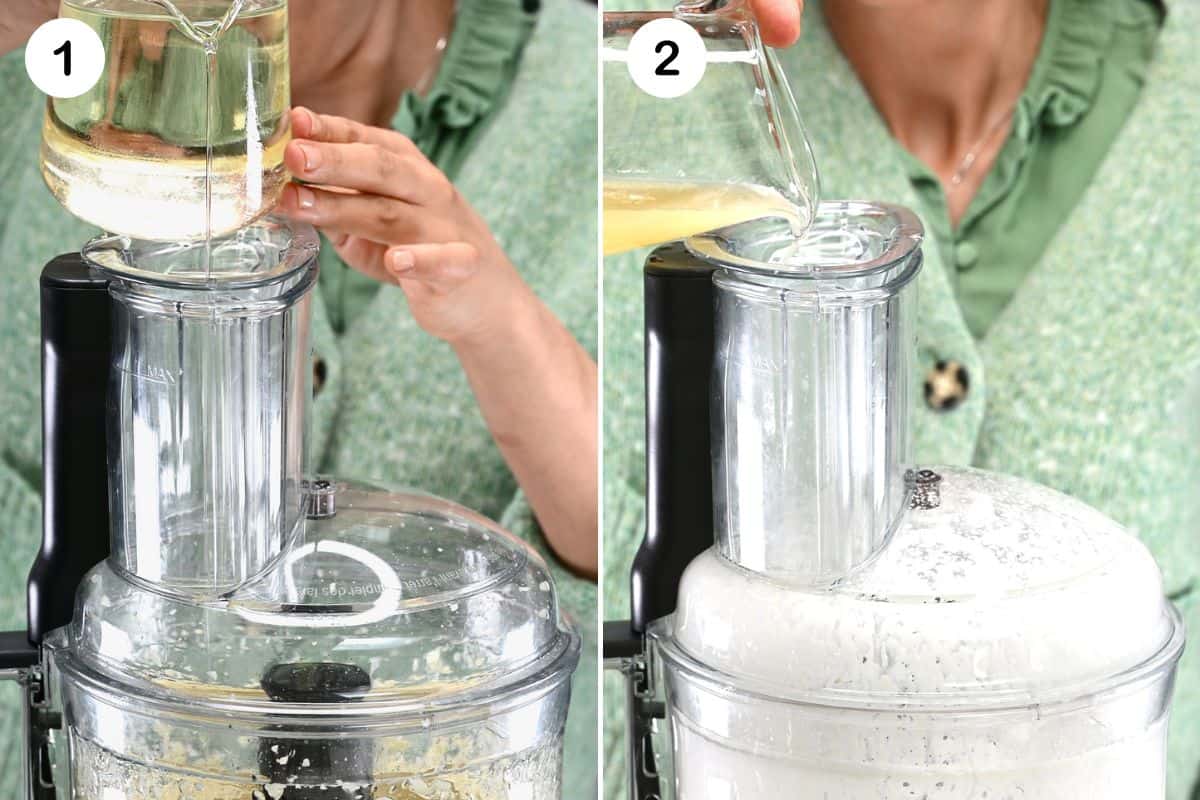
As the mixture becomes fluffy, alternate between adding small amounts of oil and lemon juice. Pour a little oil, then a little lemon juice (about 1 teaspoon at a time), while the machine is still running. Continue to alternate between adding oil and lemon juice slowly — this process should take between 7 to 9 minutes — until the mixture fully emulsifies and reaches a thick, creamy consistency.
Refrigerate: Once the sauce is properly emulsified, you can transfer it to an airtight glass container (avoid plastic). Place it in the fridge for at least 2-3 hours to allow it to marinate before using.
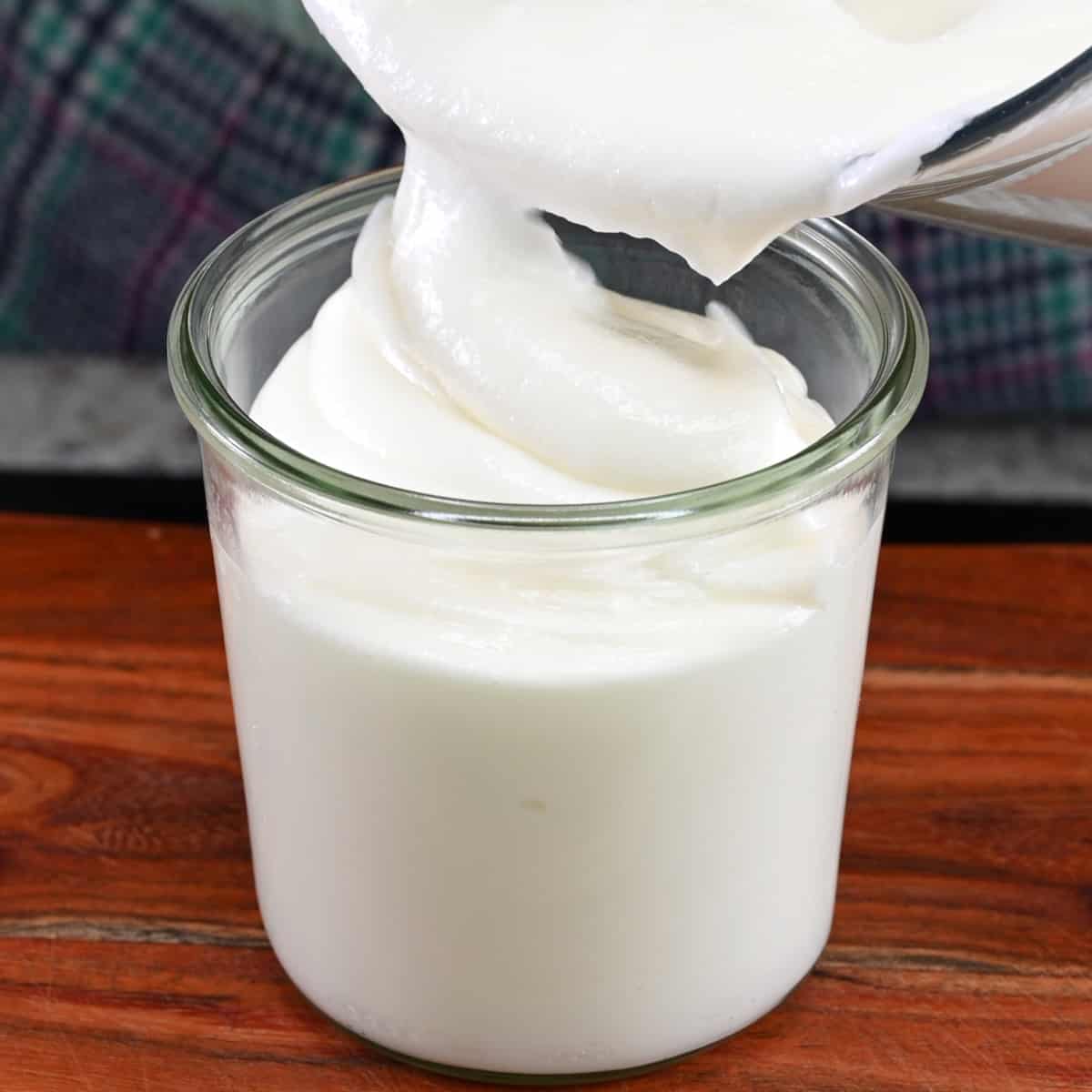
What to eat with garlic sauce
This Lebanese garlic sauce is incredibly versatile. Here are some of my favorite ways to use it that you might enjoy:
- Chicken: Toum pairs perfectly with all kinds of chicken dishes, whether grilled, baked, or sautéed, adding a rich garlic flavor that enhances the taste of the chicken.
- Kofta and Tawook: Enjoy the sauce with these two famous Lebanese dishes for a deliciously authentic experience.
- Shawarma: Spread it onto warm pita bread and add slices of shawarma meat and vegetables for a delicious wrap.
- French Fries or Potato Wedges: Use it as a dip for crispy French fries or potato wedges.

More homemade sauces
If you try this homemade garlic sauce recipe, let me know how it goes in the comments below. I’d appreciate a recipe card rating and would love to see your recipe recreations – tag me on Instagram @Alphafoodie!
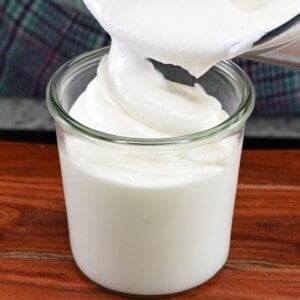
Lebanese Garlic Sauce (Toum)
Equipment
- Blender/Food processor – OR –
Ingredients
- 1 cup garlic cloves peeled (about 3-4 heads of garlic)
- 2 cups vegetable oil any neutral oil, not olive oil
- 1/3 cup lemon juice
- 1 tsp salt
This will yield about 3 cups of garlic sauce
Instructions
- Peel the garlic and, optionally, remove the "germ" (bitter green sprout) from each clove's center. Check all my top tips on how to peel a lot of garlic easily.One quick way is to smash the cloves with the flat side of a knife, then the peel comes off easily.
- Add the garlic and salt to the food processor (or a bowl if you're using an immersion blender). Process well until you obtain a well minced garlic, stopping to scrape down the sides of the jug if necessary.
- Add the oil a little at a time. Drizzle it in from the bottle or use a measuring spoon and slowly add one spoonful at a time while the machine is still running. Leave plenty of time between each spoonful so the oil is fully incorporated.
- After you've added the first few tablespoons of oil and the mixture becomes fluffy, begin alternating between adding small bits of oil and lemon juice. Add a little oil, then a little lemon juice (around 1 tsp at a time) while the machine keeps running. Continue to alternate until the mixture emulsifies and thickens and you have a thick, creamy garlic sauce – this can take 7-9 minutes.
- Place the sauce in a glass container and in the fridge for at least 2-3 hours to allow it to marinate before using.
Video
Notes
Nutrition
Nutrition information is automatically calculated, so should only be used as an approximation.

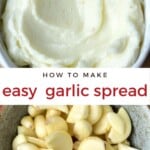
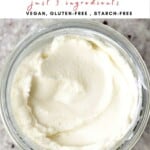

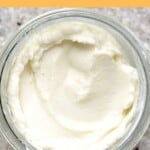
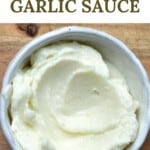


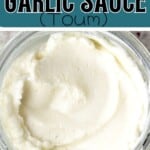
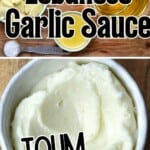


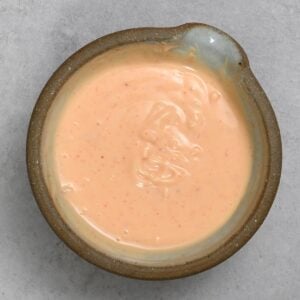
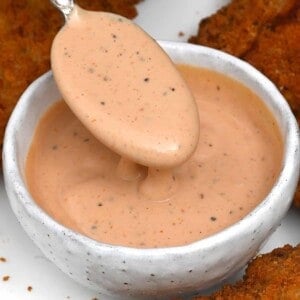









I have not made this yet! But i am going to do this my friend next door is Lebanese, and ive made falafel , he said i did a great job for the first time. I madebthem again last night. Fantastic, He never told me about this recipe . But im going to make it. Wish me luck, thank you for sharing. Susan
I hope you enjoyed making this recipe, Susan 🙂
Do you think ghee would work in liquid form? as the full oil replacement or a portion? Just wondering as I’d like to try it.
Hi Lee,
I’ve never tried it with ghee and am actually not sure if it will work. I’d recommend sticking to the oils I mentioned in the recipe for the best results. Have you tried it yet? Let me know if you tried making it with ghee and how it came out 🙂
This recipe was great! I have tried to make toum 3 times and it never worked. Your recipe finally did the trick! I recommend buying 4-5 heads of garlic because by the time I discarded bruised ones, I had enough from about 3.5 bulbs. The size of your food processor compared to the amount of garlic makes a big difference too. There needs to be enough garlic to move within the food processor.
Thank you so much for your comment, Jean! And thanks for the tips!
Soon guut! Made this yesterday and did a small taste test. My eyelashes fell out.
Tasted again this morning. Mmmmm! Perfect. Better than any store bought.
Kind regards,
Nick
Thanks for your lovely feedback, Nick. Glad you like it! 🙂
Stunning recipe! I made this in my thermomix today and was amazing! Had to remove the lid and scrape down a bit but worth it. Suggest keeping the speed around 3 to start and gradually work up to 5. Will need to be scraped down regularly but worth it. Delicious!!!!
Thank you so much for your comment and your tips, Sal! Glad you like the recipe!
It came out beautifully! I used grape seed oil due to dietary restrictions… I’ll know in 2 hours if it tastes ok:)
Thank you for the feedback Sylvia, how did it taste? 🙂
I also used (grapeseed oil – 3/4c with 1/4c light olive oil). It gives it the faintest green tint but is very neutral flavored so all I get is the garlic – delicious!
Also thank you – this is the first time I’ve made the vegan tour without it splitting, your tips were amazing!
Thank you comment, Samm! So glad to hear 🙂
I used to work at a Lebanese restaurant a few years back and they had me in the kitchen helping prep in the morning. I made this every day and their tip for helping it thicken and not break was to refrigerate the oil used before hand. I still do this at home today when I get a craving for this delicious sauce!! Hope this helps someone having that problem.
Thanks for your tip, Desiree!
I’d love to have info on what to serve this with? Sounds yummy
Hi Arthur,
You can spread it on a falafel or chawarma wrap, or just on toast. You can use it as a dip for fries or veggies.
You can mix it into soups or stews. Anything you’d enjoy eating with garlic. There are more serving suggestions in this blog post 🙂
I really want to make this with olive oil but worry that it will get too solid in the refrig. Will this be a problem?
Hi Linda,
You don’t have to keep it in the fridge if you cover the labneh with olive oil. If you do, it will become a bit thicker but you shouldn’t let that turn you off.
I made it for the first time today and it worked beautifully! Thank you.
Thank you for your comment, Mai. So happy to hear this 🙂
Loooove this recipe!! It worked wonderfully with an emersion blender and avocado oil!! I’m wondering if I can freeze it..
Hi Zeina,
Glad you like this recipe 🙂
Yes, you can freeze it for up to 6 months.
I used an immersion blender in a mason jar and it worked beautifully
Thank you so much for your comment, Megan. Glad you are enjoying the recipe!